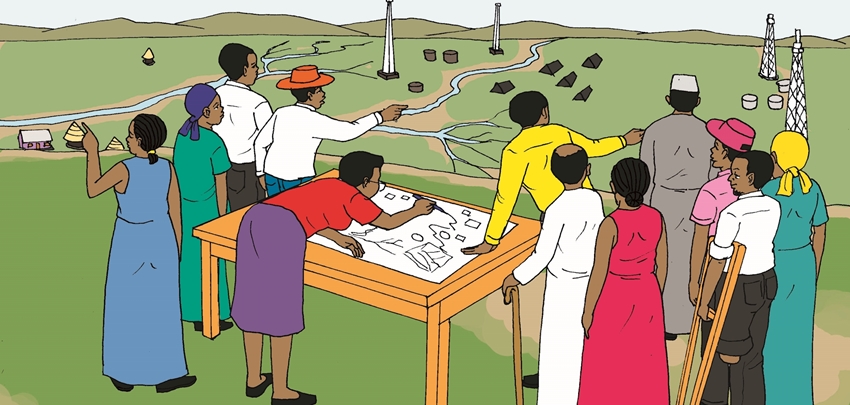When Oil, Gas or Mining Arrives in Your Area

With little or no access to relevant information and technical advice, limited public participation and weak organization, local communities confronted with the arrival of oil, gas and mining companies often cannot realistically assess the potential risks or advantages that a project might bring to their area. As a result, they are unable to engage effectively and in a timely manner with government and companies to ensure that the project becomes beneficial to their community. If subsequent negative impacts are not adequately redressed, and if benefits are unevenly distributed among different groups, the already limited trust is further undermined and the risk of communal and community–company–government tensions increases.
At Timu, we believe that strengthening local communities through information-sharing, skills development and meaningful, multi-stakeholder dialogue will help to ensure that oil, gas and mining projects, if accepted by the communities, benefit ordinary citizens. Local communities must be enabled to develop and express their own vision for a sustainable future, and to understand the structure of the extractives industry, the national legal and policy framework, and the international normative frameworks and practices. With the support of a strong civil society network, they will then be able to engage more effectively and constructively with companies and government. As a result, social tensions and violent conflict in oil, gas and mining areas can be significantly reduced or even prevented.
Developed for Cordaid by Timu together with Independent Social Performance, the social aspects guide is specifically designed for facilitators and trainers wanting to raise awareness of local communities in oil, gas and mineral producing regions. The material is presented in simple language and is accompanied by illustrations. The guide can be used in conjunction with the earlier published guide on the technical aspects of oil & gas.
To download the (social aspects) guide, click here.
